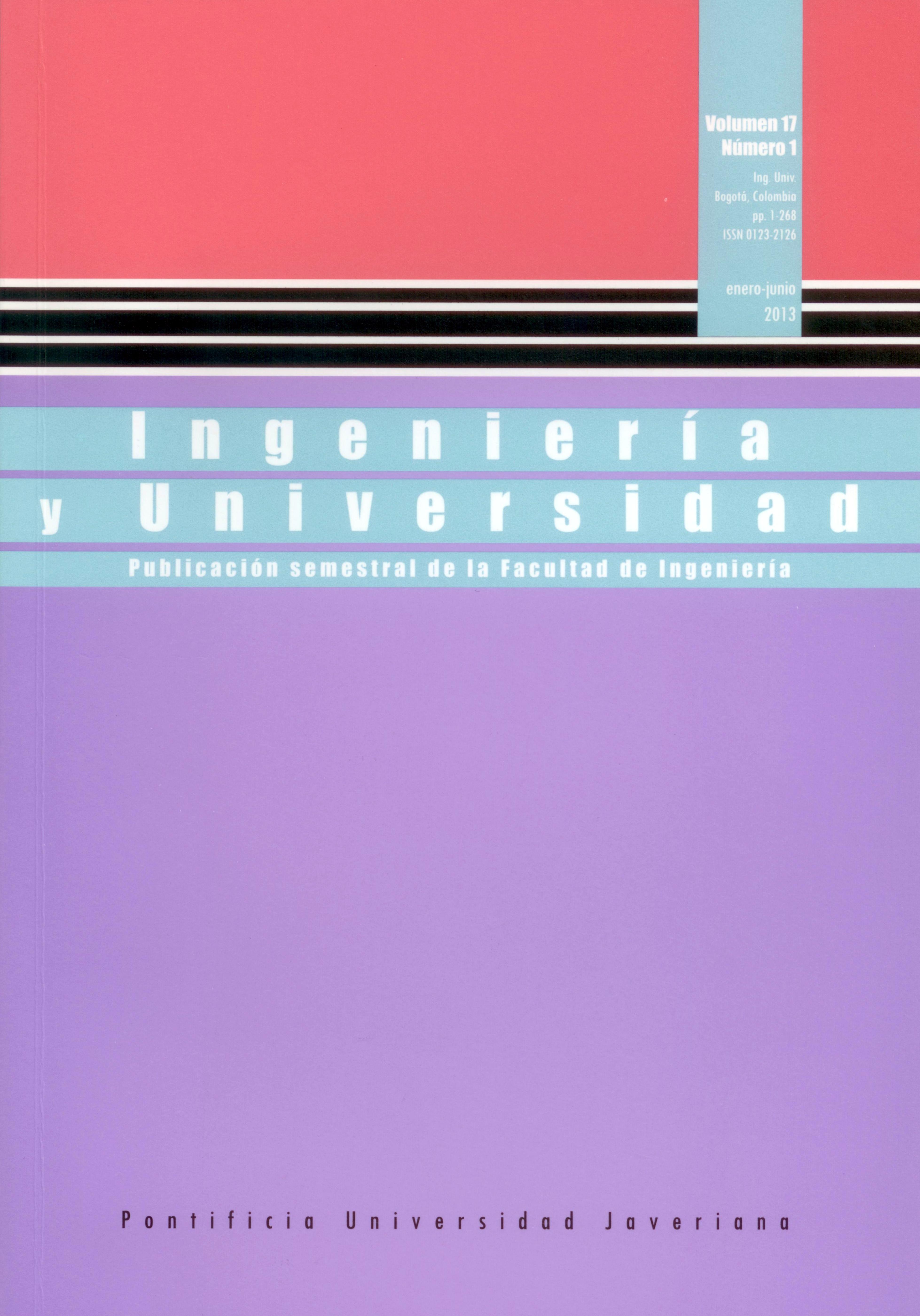Abstract
This paper compares the influence of the temperature of the electrolyte in corrosion resistance of ceramic coatings of Chromium Nitride (CrN) produced with the unbalanced magnetrons puttering system (UBM) with industrial metallic coatings of hard chromium and organic epoxy paints. All coatings were deposite dover A36 carbon steel. The evaluation of corrosion resistance was determined through electrochemical impedance spectroscopy (EIS) in a 3% sodium chloride solution. For this purpose the temperature of the electrolyte was varied from 20 ºC to 80 ºC, and viceversa, with an interval of 20 ºC and taking measures every 24 hours. In general, organic coatings presented the least degradation in the time of the experiment; never the less, by the time the temperature cycle was over, the corrosion resistance was similar in the organic coatings and the ceramic ones. This paper discusses the corrosion mechanisms for each of the coatings produced.
CHANG, R. y COLLEGE, W. Química general. 7a ed. México: McGraw Hill, 2002.
DINI, J. Electrodeposition, the material science of coatings and substrate. New Jersey: William Andrew, 1993.
FLORES, J. et al. Corrosion behaviour of TaN thin PVD films on steels. Corrosion, Engineering, Science & Technology. 2006, vol. 41, núm. 2, pp. 168-176.
FORSGREN, A. Corrosion control through organic coatings. Boca Raton: Taylor and Francis Group, 2006.
GALVELE, J. y DUFFÓ, G. Degradación de materiales: corrosión. Buenos Aires: Jorge Baudino, 2006.
ITAGAKI, M. et al. Analysis on organic film degradation by dynamic impedance measurements. Corrosion Science. 2006, vol. 48, núm. 11, pp. 3802-3811.
KIRCHLECHNER, C. et al. Residual stresses in thermally cycled CrN coatings on steel. Thin Solid Films. 2008, vol. 517, núm. 3, pp. 1167-1171.
LAMASTRA, C. et al. G.X-ray residual stress analysis on CrN/Cr/CrN multilayer PVD coatings deposited on different steel substrates. Surface and Coatings Technology. 2006, vol. 200, núm. 22-23, pp. 6172-6175.
LAUSMANN, G. et al. Electrolytically deposited hardchrome. Surface Coating Technology. 1996, vol. 86-87, pp. 814-820.
LIU, C. et al. An electrochemical impedance spectroscopy study of the corrosion behavior of PVD coated steels in 0.5 N NaCl aqueous solution: Part I. Establishment of equivalent circuits for EIS data modelling. Corrosion Science. 2003a, vol. 45, pp. 1243-1256.
LIU, C. et al. An electrochemical impedance spectroscopy study of the corrosion behavior of PVD coated steels in 0.5 N NaCl aqueous solution: Part II.: EIS interpretation of corrosión behaviour. Corrosion Science. 2003b, vol. 45, pp. 1257-1273.
SAN MARTÍN, M. Efecto de la temperatura en la evaluación de recubrimientos anticorrosivos. Tesis doctoral, Universidad Autónoma de México, México, 2006.
NAVINSEK, B. et al. PVD coatings as an environmentally clean alternative to electroplating and electroless processes. Surface and Coatings Technology. 1999, vol. 116-119, pp. 476-487.
OCAMPO, L. M. y GUZMÁN, A. Evaluación de la resistencia a la corrosión del sistema primer epóxico rico en zinc/acabado polisiloxano por medio de espectroscopia de impedancia electroquímica. Dyna. 2011, vol. 78, núm. 167, pp. 87-95.
OLAYA, J. et al. Comparative study of chromium nitride coatings deposited by unbalanced and balanced magnetron sputtering. Thin Solid Films. 2005, vol. 474, núm. 1-2, pp. 119-126.
PLETCHER, D. y WALSH F. Industrial electrochemistry. 2th ed. London: Chapman and Hall, 1982.
QUIÑONES, S. et al. Electroconductividad de las soluciones electrolíticas. En Fundamentos de electroquímica. México: Instituto Politécnico Nacional, 1988, pp. 28-41.
SUÁREZ GARCÍA, O. J. Obtención y caracterización electroquímica y estructural de recubrimientos de cromo decorativo a partir de soluciones de cromo trivalente. Tesis de Maestría. Bogotá: Universidad Nacional de Colombia, Departamento de Ingeniería Mecánica y Mecatrónica, 2010.
TORRES, M. Estudio comparativo del proceso de corrosión en recubrimientos cerámicos, metálicos y orgánicos mediante técnicas electroquímicas. Tesis de Maestría. Bogotá: Universidad Nacional de Colombia, Departamento de Ingeniería Mecánica y Mecatrónica, 2010.
TORRES, M. et al. Estudio comparativo de la evaluación a la corrosión de recubrimientos de CrN y CrN/Cr con recubrimientos de cromo electrodepositado y pinturas tipo epoxy. Ingeniería e Investigación. 2010, vol. 30, núm. 3, pp. 8-15.
ZHANG, J. et al. Studies of water transport behavior and impedance models of epoxy-coated metals in NaCl solution by EIS. Progress in Organic Coatings. 2004, vol. 51, núm. 2, pp. 145-151.
This journal is registered under a Creative Commons Attribution 4.0 International Public License. Thus, this work may be reproduced, distributed, and publicly shared in digital format, as long as the names of the authors and Pontificia Universidad Javeriana are acknowledged. Others are allowed to quote, adapt, transform, auto-archive, republish, and create based on this material, for any purpose (even commercial ones), provided the authorship is duly acknowledged, a link to the original work is provided, and it is specified if changes have been made. Pontificia Universidad Javeriana does not hold the rights of published works and the authors are solely responsible for the contents of their works; they keep the moral, intellectual, privacy, and publicity rights.
Approving the intervention of the work (review, copy-editing, translation, layout) and the following outreach, are granted through an use license and not through an assignment of rights. This means the journal and Pontificia Universidad Javeriana cannot be held responsible for any ethical malpractice by the authors. As a consequence of the protection granted by the use license, the journal is not required to publish recantations or modify information already published, unless the errata stems from the editorial management process. Publishing contents in this journal does not generate royalties for contributors.


